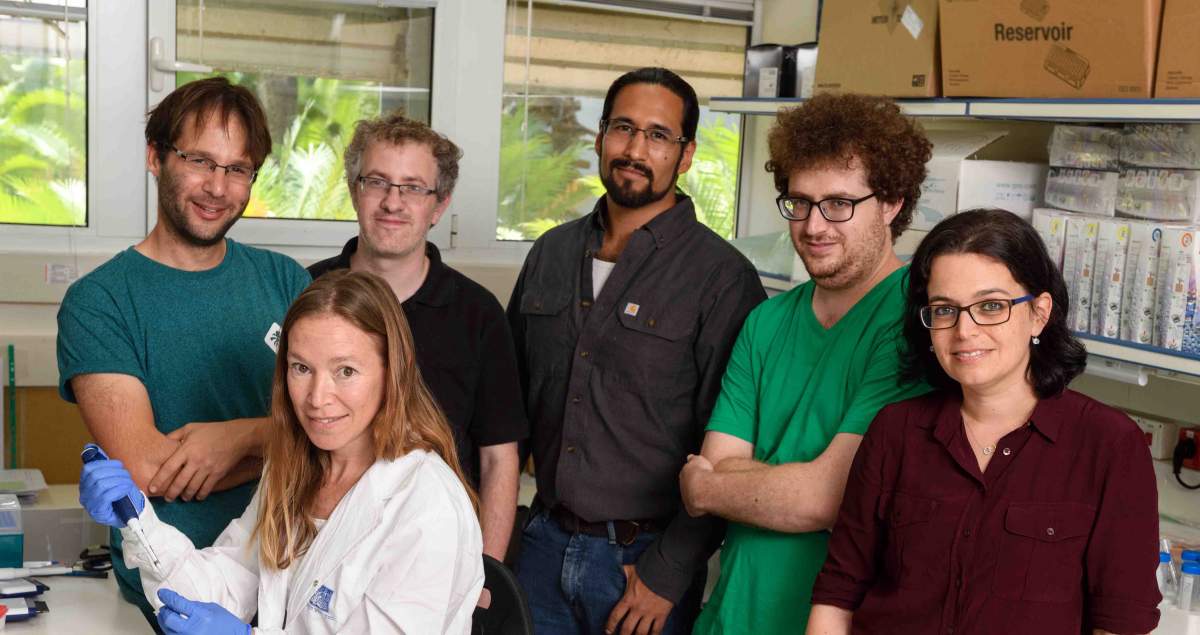Are you a journalist? Please sign up here for our press releases
Subscribe to our monthly newsletter:

The code name for a chemical tag at the center of a recent Weizmann Institute of Science study sounds a bit like the name of the British Foreign Service, but its doings are much more likely to be made public in the near future. In fact, bringing to light the precise whereabouts of the tag – a genetic switch called m6A – and understanding how it operates is of crucial importance because its role, which has been shadowy until recently, is key for regulating the genome. In the new study, reported in Cell, a team of scientists headed by Dr. Schraga Schwartz of the Molecular Genetics Department found a way to reveal the distribution of m6A in a given cell and deciphered the genetic sequence that encodes its placement.
The m6A tag was discovered nearly half a century ago, but tools for studying it effectively were until recently limited. The tag regulates the functioning of RNA, the transient molecules that carry instructions from DNA to the cell’s protein-making machinery. The “m” in m6A stands for a small chemical compound called a methyl group, which attaches itself to the sixth position of an RNA building block called the A nucleotide, ultimately causing the entire RNA molecule to disintegrate. Less than 1 percent of all the A nucleotides in mammalian RNA are tagged by m6A, but studies by numerous researchers at the Weizmann Institute and elsewhere have shown that errors in this tagging can have far-reaching consequences. They may, for example, interfere with the growth of an embryo by preventing embryonic stem cells from differentiating into specialized tissues; or they can cause an abnormal proliferation of various cell types, leading to leukemia.

Previous methods for detecting m6A, which relied on marking it with antibodies, had made it possible to reveal the presence of the tag but not to measure its quantity at specific locations. In the new study, the Weizmann scientists developed a quantitative method for profiling m6A without relying on antibodies. Instead, they made use of an enzyme that is known to cut RNA molecules at particular sites containing A and C nucleotides: the ACA sequence. It had been shown previously that if the m6A tag attaches itself to the first A of the ACA, the enzyme is unable to cut the RNA at that spot. Armed with this knowledge, the scientists exposed yeast and mammalian RNA to the enzyme, sequenced the resulting RNA fragments and analyzed the sequences – those of the fragments cut by the enzyme and those of the fragments that remained uncut, thus revealing m6A tagging– using specially designed algorithms.
The analysis provided a detailed map of m6A distribution: which A nucleotides of which RNAs had been tagged by m6A, in what percentage of the cases. Not only that, the analysis enabled the scientists to learn more about the way that m6A chooses where to attach onto the RNA molecule. Its actual attachment sites, ACA among them, had been known, but this wasn’t enough because, for example, there are many more ACA sites to which m6A does not get attached than those to which it does. The new study has deciphered a longer genetic sequence that defines the attachment sites with greater precision.
Less than 1 percent of all the A nucleotides in mammalian RNA are tagged by m6A, but studies have shown that errors in this tagging can have far-reaching consequences
These findings can be used to study the role of m6A in various diseases by exploring the tag’s distribution throughout different physiological processes and comparing its placement in healthy and disease states of the organism. Once the role of m6A in the cell is better understood, it may be possible to develop ways of restoring its proper functioning in cases when it is disrupted.
The study was led by Miguel Angel Garcia-Campos and Dr. Sarit Edelheit in Schwartz’s lab. They worked with Dr. Modi Safra, Ran Shachar, Sergey Viukov, Roni Winkler, Dr. Ronit Nir, Lior Lasman and Prof. Jacob H. Hanna of the Molecular Genetics Department, and Dr. Alexander Brandis of the Life Sciences Core Facilities Department, and in collaboration with Ursula Toth and Prof. Walter Rossmanith of the Medical University of Vienna.
Dr. Schraga Schwartz's research is suppoted by the estate of Emile Mimran; and the European Research Council. Dr. Schwartz is the incumbent of the Robert Edward and Roselyn Rich Manson Career Development Chair in Perpetuity.